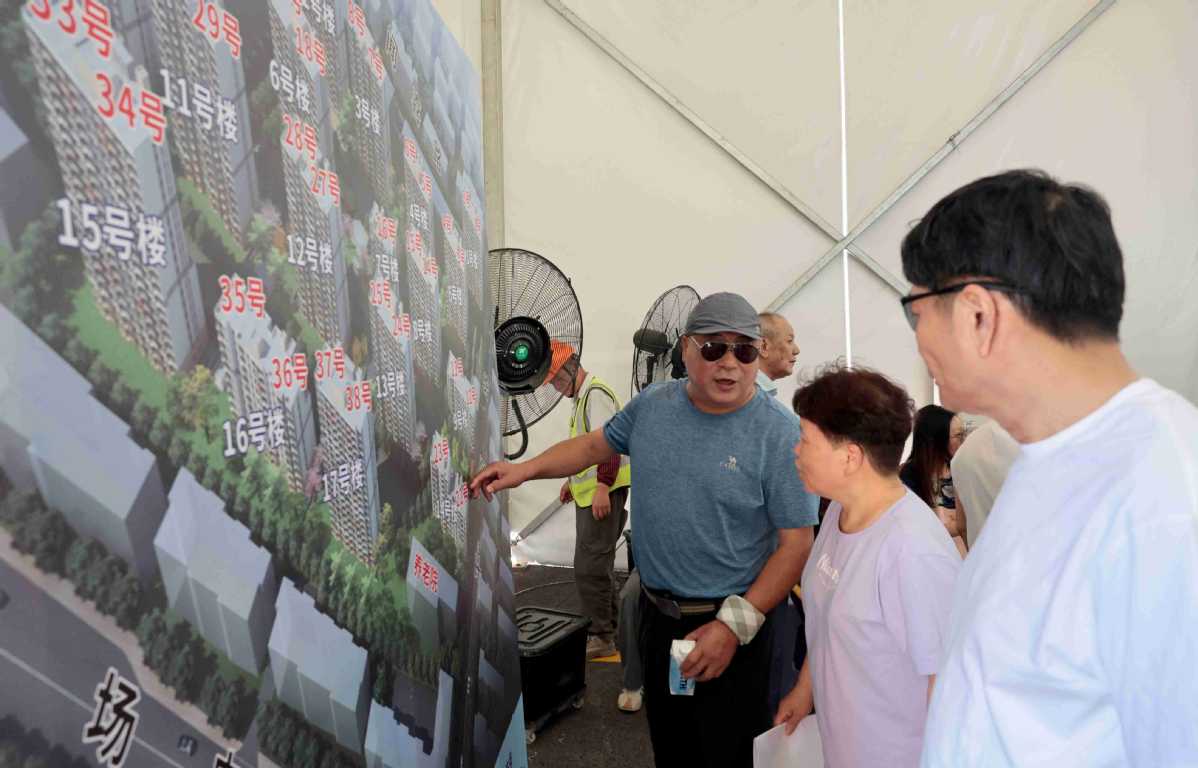Revitalizing nation's aging housing stock
China empowers residents to lead reconstruction of old urban homes


For Wang Huiying, a 67-year-old resident of a 1980s-era apartment building in Beijing, daily life is a litany of small struggles.
Climbing five flights of stairs requires two breaks to catch her breath. The rainy season brings leaks that demand three buckets strategically placed on her windowsill, and wall plaster has crumbled away entirely in some spots, exposing the bare brick beneath.
"It's exhausting," she said. Her complaints echo a common refrain among millions of residents across China's cities, where a vast stock of housing is rapidly showing its age.
These older neighborhoods, once the hallmark of urban modernization, now present a dual challenge: they are not only increasingly obsolete, with outdated amenities and poor insulation, but are also largely structurally unsound.
Many have been classified as Grade C or D — the official ratings for buildings deemed unsafe for habitation — posing persistent safety risks to their occupants.
Data from the Ministry of Housing and Urban-Rural Development show that by the end of 2022, nearly 20 percent of all urban buildings in China were over 30 years old. This signifies that a growing portion of the national housing stock is entering the middle and later stages of its intended design life.
By 2040, an estimated 80 percent of urban buildings will have reached this phase, presenting a monumental task for policymakers focused on urban renewal.
This significant challenge was underscored at a recent Central Urban Work Conference, which outlined the nation's transition from a period of rapid urbanization to one of stable, quality-focused development.
The directive signals a fundamental change in priority: the focus is no longer solely on building the new, but increasingly on improving the old, experts said.
For over a decade, the dominant approach for urban renewal was clear-cut: demolish aging neighborhoods and erect new towers in their place, said Yang Baojun, president of the Urban Planning Society of China.
This approach, known as the shantytown redevelopment model, once drove a transformative wave of construction, relocating millions of residents into modern housing and clearing vast swathes of China's urban past.
The model thrived in an era of booming real estate. With property values on a steady climb, local governments could easily partner with developers. The profits from selling new, higher-density apartments not only covered the costs of demolition and rebuilding, but also generated significant revenue, making it a financially self-sustaining engine of urban change, Yang said.
That era, Yang noted, is largely over. As China's property market enters a period of recalibration and adjustment, the economic calculus that made large-scale demolition so viable has fundamentally shifted. The once-reliable profits have narrowed, complicating funding and discouraging developer participation, Yang added.
"Now China is empowering residents to lead the revitalization of the country's aging urban housing stock, moving away from government-driven redevelopment models that once defined the nation's rapid urbanization," Yang said.
The change, outlined in a recent central government directive on urban high-quality development, emphasizes "resident-led renewal and in-situ reconstruction" for old homes — a response to both economic constraints and evolving social demands.
Li Yujia, chief researcher at the residential policy research center of the Guangdong Planning Institute, said: "It's a bottom-up refresh of urban neighborhoods. Residents organize, fund and manage the process. The government's role evolves from direct player to facilitator and policy guarantor."
Through community self-governance, residents make collective decisions, raise funds independently and openly select developers to demolish and rebuild existing structures — all while guaranteeing their right to return, Li said.
Last year, Zhejiang became the first province in China to issue trial guidelines supporting resident-led urban renewal, a policy now formalized in the newly implemented regulations. The rules establish a clear legal pathway: building owners may propose renewal project applications.




































